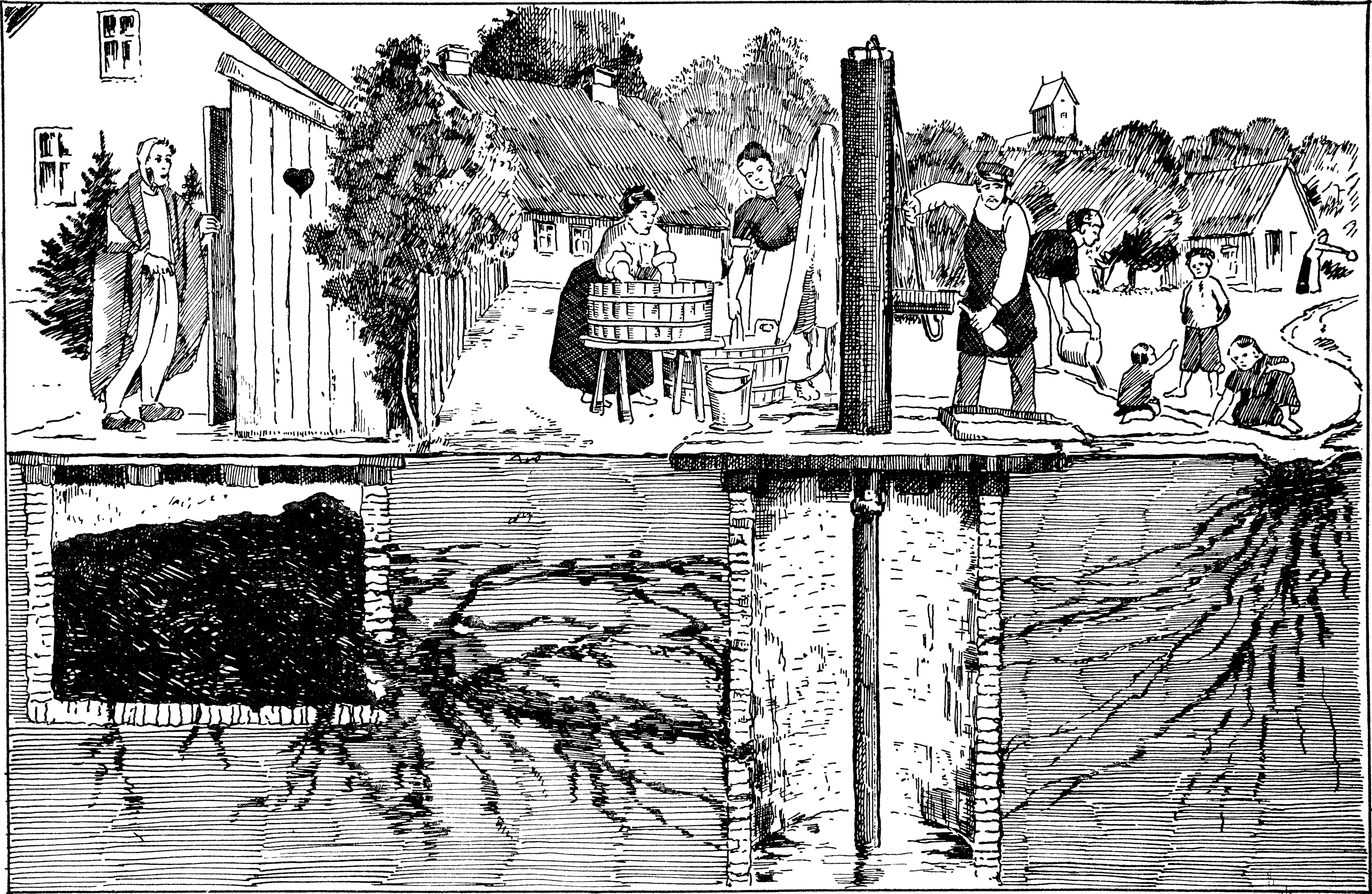|
Muscidae Genera
Muscidae are a family of flies found in the superfamily Muscoidea. Muscidae, some of which are commonly known as house flies or stable flies due to their synanthropy, are worldwide in distribution and contain almost 4,000 described species in over 100 genera. Most species are not synanthropic. Adults can be predatory, hematophagous, saprophagous, or feed on a number of types of plant and animal exudates. They can be attracted to various substances including sugar, sweat, tearand blood. Larvae occur in various habitats including decaying vegetation, dry and wet soil, nests of insects and birds, fresh water, and carrion. The Housefly, housefly, ''Musca domestica'', is the best known and most important species. Some, from the genera ''Hydrotaea'' and '' Muscina'', are involved in forensic case studies. Identifying characteristics The antennae are three-segmented and aristate; vein Rs is two-branched, a frontal suture is present, and the calypters are well developed. The ... [...More Info...] [...Related Items...] OR: [Wikipedia] [Google] [Baidu] |
Musca Domestica
The housefly (''Musca domestica'') is a fly of the suborder Cyclorrhapha. It possibly originated in the Middle East, and spread around the world as a commensal of humans. Adults are gray to black, with four dark, longitudinal lines on the thorax, slightly hairy bodies, and a single pair of membranous wings. They have red compound eyes, set farther apart in the slightly larger female. The female housefly usually mates only once and stores the sperm for later use. It lays batches of about 100 eggs on decaying organic matter such as food waste, carrion, or feces. These soon hatch into legless white larvae, known as maggots. After two to five days of development, these metamorphose into reddish-brown pupae, about long. Adult flies normally live for two to four weeks, but can hibernate during the winter. The adults feed on a variety of liquid or semi-liquid substances, as well as solid materials which have been softened by their saliva. They can carry pathogens on their bodies a ... [...More Info...] [...Related Items...] OR: [Wikipedia] [Google] [Baidu] |
Hydrotaea
''Hydrotaea'' is a genus of insects in the housefly family, Muscidae. They occur in most regions of the world but are more populous in warmer climates. They are often found on feces in summer months, and are therefore generally found in close proximity to livestock. Among the 130 known species in this genus, one of the most commonly recognized is the Hydrotaea aenescens, dump fly. Along with many other genera in the family, ''Hydrotaea'' is of forensic importance in both the economic and public health scene. Flies in general are considered by many authorities to be the most important insects involved in medicine, human and veterinary medicine. Certain ''Hydrotaea'' species have been proven to carry and transmit certain diseases to warm blooded animals, including humans. Researchers continue to monitor these Vector (epidemiology), vectors of disease as they have been connected with the spread of mastitis. Species Description Larvae of this genus are often Polymorphism (bio ... [...More Info...] [...Related Items...] OR: [Wikipedia] [Google] [Baidu] |
Eocene
The Eocene ( ) is a geological epoch (geology), epoch that lasted from about 56 to 33.9 million years ago (Ma). It is the second epoch of the Paleogene Period (geology), Period in the modern Cenozoic Era (geology), Era. The name ''Eocene'' comes from the Ancient Greek (''Ēṓs'', 'Eos, Dawn') and (''kainós'', "new") and refers to the "dawn" of modern ('new') fauna that appeared during the epoch.See: *Letter from William Whewell to Charles Lyell dated 31 January 1831 in: * From p. 55: "The period next antecedent we shall call Eocene, from ήως, aurora, and χαινος, recens, because the extremely small proportion of living species contained in these strata, indicates what may be considered the first commencement, or ''dawn'', of the existing state of the animate creation." The Eocene spans the time from the end of the Paleocene Epoch to the beginning of the Oligocene Epoch. The start of the Eocene is marked by a brief period in which the concentration of the carbon isoto ... [...More Info...] [...Related Items...] OR: [Wikipedia] [Google] [Baidu] |
Permian
The Permian ( ) is a geologic period and System (stratigraphy), stratigraphic system which spans 47 million years, from the end of the Carboniferous Period million years ago (Mya), to the beginning of the Triassic Period 251.902 Mya. It is the sixth and last period of the Paleozoic Era; the following Triassic Period belongs to the Mesozoic Era. The concept of the Permian was introduced in 1841 by geologist Sir Roderick Murchison, who named it after the Perm Governorate, region of Perm in Russia. The Permian witnessed the diversification of the two groups of amniotes, the synapsids and the Sauropsida, sauropsids (reptiles). The world at the time was dominated by the supercontinent Pangaea, which had formed due to the collision of Euramerica and Gondwana during the Carboniferous. Pangaea was surrounded by the superocean Panthalassa. The Carboniferous rainforest collapse left behind vast regions of desert within the continental interior. Amniotes, which could better cope with these ... [...More Info...] [...Related Items...] OR: [Wikipedia] [Google] [Baidu] |
Atherigona
''Atherigona'' is a genus of flies in the family Muscidae. Pests Larvae of some ''Atherigona'' species are important pests in cultivation of cereals, like rice and maize. Many are known as shoot flies. Some important species include: *''Atherigona approximata'' (pearl millet shoot fly): affects '' Pennisetum typhoides'', ''Sorghum bicolor'' *'' Atherigona atripalpis'' (foxtail millet shoot fly): affects ''Setaria italica'' *'' Atherigona biseta'': affects ''Setaria italica'', ''Setaria viridis'' *'' Atherigona falcata'' (barnyard millet shoot fly): affects ''Echinochloa colona'', ''Echinochloa frumentacea'', ''Echinochloa stagnina'', '' Panicum sumatrense'' *''Atherigona hyalinipennis'' (teff shoot fly) *'' Atherigona miliaceae'' (finger millet shoot fly or little millet shoot fly): affects ''Panicum miliaceum'', '' Panicum sumatrense'' *'' Atherigona naqvii'' (wheat stem fly): affects ''Triticum aestivum'', ''Zea mays'' *'' Atherigona orientalis'' (tomato fly or pepper fruit fl ... [...More Info...] [...Related Items...] OR: [Wikipedia] [Google] [Baidu] |
African Trypanosomiasis
African trypanosomiasis is an insect-borne parasitic infection of humans and other animals. Human African trypanosomiasis (HAT), also known as African sleeping sickness or simply sleeping sickness, is caused by the species ''Trypanosoma brucei''. Humans are infected by two types, ''Trypanosoma brucei gambiense'' (TbG) and ''Trypanosoma brucei rhodesiense'' (TbR). TbG causes over 92% of reported cases. Both are usually transmitted by the bite of an infected tsetse fly and are most common in rural areas. Initially, the first stage of the disease is characterized by fevers, headaches, itchiness, and joint pains, beginning one to three weeks after the bite. Weeks to months later, the second stage begins with confusion, poor coordination, numbness, and trouble sleeping. Diagnosis involves detecting the parasite in a blood smear or lymph node fluid. A lumbar puncture is often needed to tell the difference between first- and second-stage disease. Prevention of severe disease in ... [...More Info...] [...Related Items...] OR: [Wikipedia] [Google] [Baidu] |
Anthrax
Anthrax is an infection caused by the bacterium '' Bacillus anthracis'' or ''Bacillus cereus'' biovar ''anthracis''. Infection typically occurs by contact with the skin, inhalation, or intestinal absorption. Symptom onset occurs between one day and more than two months after the infection is contracted. The skin form presents with a small blister with surrounding swelling that often turns into a painless ulcer with a black center. The inhalation form presents with fever, chest pain, and shortness of breath. The intestinal form presents with diarrhea (which may contain blood), abdominal pains, nausea, and vomiting. According to the U.S. Centers for Disease Control and Prevention, the first clinical descriptions of cutaneous anthrax were given by Maret in 1752 and Fournier in 1769. Before that, anthrax had been described only in historical accounts. The German scientist Robert Koch was the first to identify ''Bacillus anthracis'' as the bacterium that causes anthrax. Anthra ... [...More Info...] [...Related Items...] OR: [Wikipedia] [Google] [Baidu] |
Dysentery
Dysentery ( , ), historically known as the bloody flux, is a type of gastroenteritis that results in bloody diarrhea. Other symptoms may include fever, abdominal pain, and a feeling of incomplete defecation. Complications may include dehydration. The cause of dysentery is usually the bacteria from genus '' Shigella'', in which case it is known as shigellosis, or the amoeba '' Entamoeba histolytica''; then it is called amoebiasis. Other causes may include certain chemicals, other bacteria, other protozoa, or parasitic worms. It may spread between people. Risk factors include contamination of food and water with feces due to poor sanitation. The underlying mechanism involves inflammation of the intestine, especially of the colon. Efforts to prevent dysentery include hand washing and food safety measures while traveling in countries of high risk. While the condition generally resolves on its own within a week, drinking sufficient fluids such as oral rehydration solutio ... [...More Info...] [...Related Items...] OR: [Wikipedia] [Google] [Baidu] |
Typhoid Fever
Typhoid fever, also known simply as typhoid, is a disease caused by '' Salmonella enterica'' serotype Typhi bacteria, also called ''Salmonella'' Typhi. Symptoms vary from mild to severe, and usually begin six to 30 days after exposure. Often there is a gradual onset of a high fever over several days. This is commonly accompanied by weakness, abdominal pain, constipation, headaches, and mild vomiting. Some people develop a skin rash with rose colored spots. In severe cases, people may experience confusion. Without treatment, symptoms may last weeks or months. Diarrhea may be severe, but is uncommon. Other people may carry it without being affected, but are still contagious. Typhoid fever is a type of enteric fever, along with paratyphoid fever. ''Salmonella enterica'' Typhi is believed to infect and replicate only within humans. Typhoid is caused by the bacterium ''Salmonella enterica'' subsp. ''enterica'' serovar Typhi growing in the intestines, Peyer's patches, mesen ... [...More Info...] [...Related Items...] OR: [Wikipedia] [Google] [Baidu] |
Fanniidae
The Fanniidae are a small (285 species in five genera) group of true flies largely confined to the Holarctic and temperate Neotropical realms; there are 11 Afrotropical species, 29 Oriental, and 14 Australasian. Adults are medium-sized to small and usually have mainly dark body and leg colours. Males congregate in characteristic dancing swarms beneath trees; females are more retiring in habit. Larvae are characterised by their flattened bodies with striking lateral protuberances, and live as scavengers in various kinds of decaying organic matter. The lesser housefly '' Fannia canicularis'' is a worldwide synanthropic species. Fanniidae are indicators useful in forensic entomology. Identifying characteristics The Fanniidae were once a subfamily of Muscidae from which they may be distinguished by: *A (strictly) dorsal bristle is on the hind tibia below the middle and in addition to the dorsal preapical. *The axillary vein is strongly curved towards the wingtip, so if extended, ... [...More Info...] [...Related Items...] OR: [Wikipedia] [Google] [Baidu] |
Arista (insect Anatomy)
In insect anatomy, the arista is a simple or variously modified apical or subapical bristle, arising from the third antennal segment. It is the evolutionary remains of antennal segments, and may sometimes show signs of segmentation. These segments are called aristameres. The arista may be bare and thin, sometime appearing no more than a simple bristle; pubescent, covered in short hairs; or plumose, covered in long hairs. The presence of an arista is a feature of the Diptera (flies) suborder Brachycera and may be especially well-developed in some species. It is also present in some members of Hemiptera Hemiptera (; ) is an order of insects, commonly called true bugs, comprising more than 80,000 species within groups such as the cicadas, aphids, planthoppers, leafhoppers, assassin bugs, bed bugs, and shield bugs. They range in size from ... (true bugs), specifically in the suborder Auchenorrhyncha. The arista is often covered in multiple kinds of sensilla, or sens ... [...More Info...] [...Related Items...] OR: [Wikipedia] [Google] [Baidu] |






